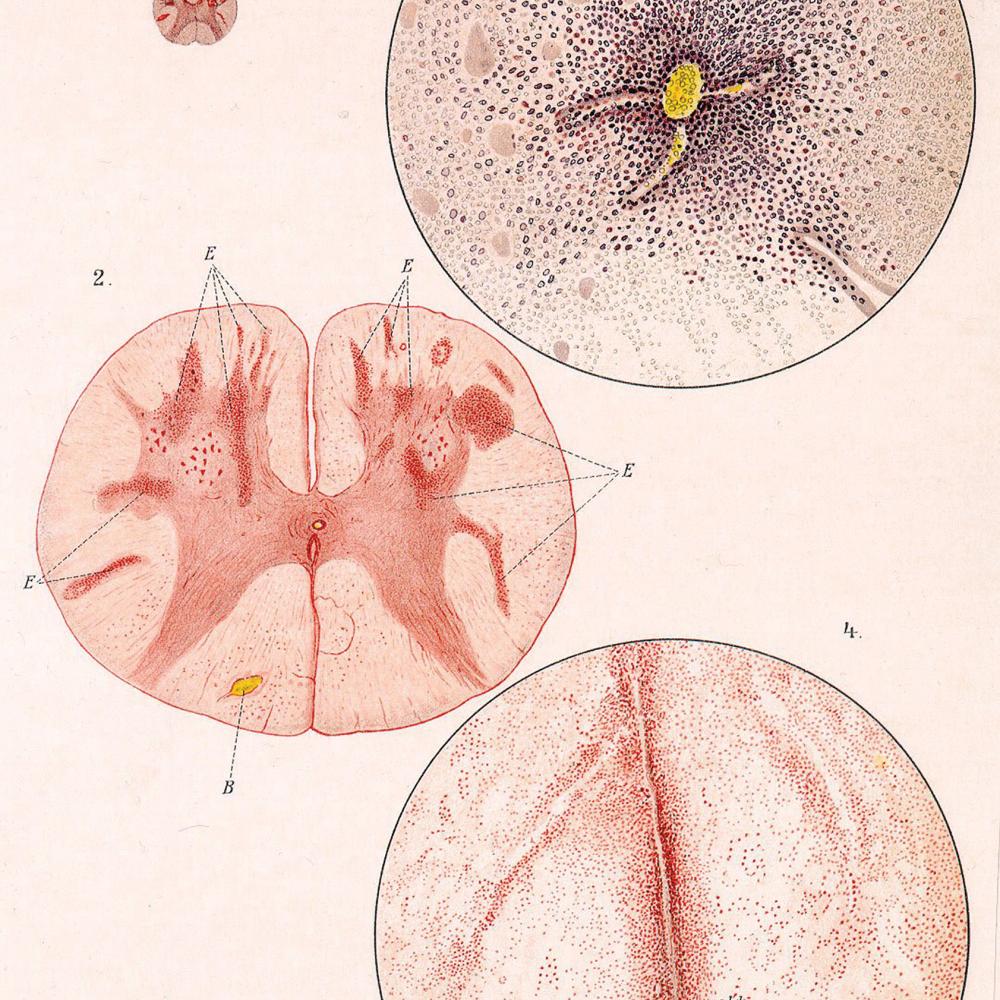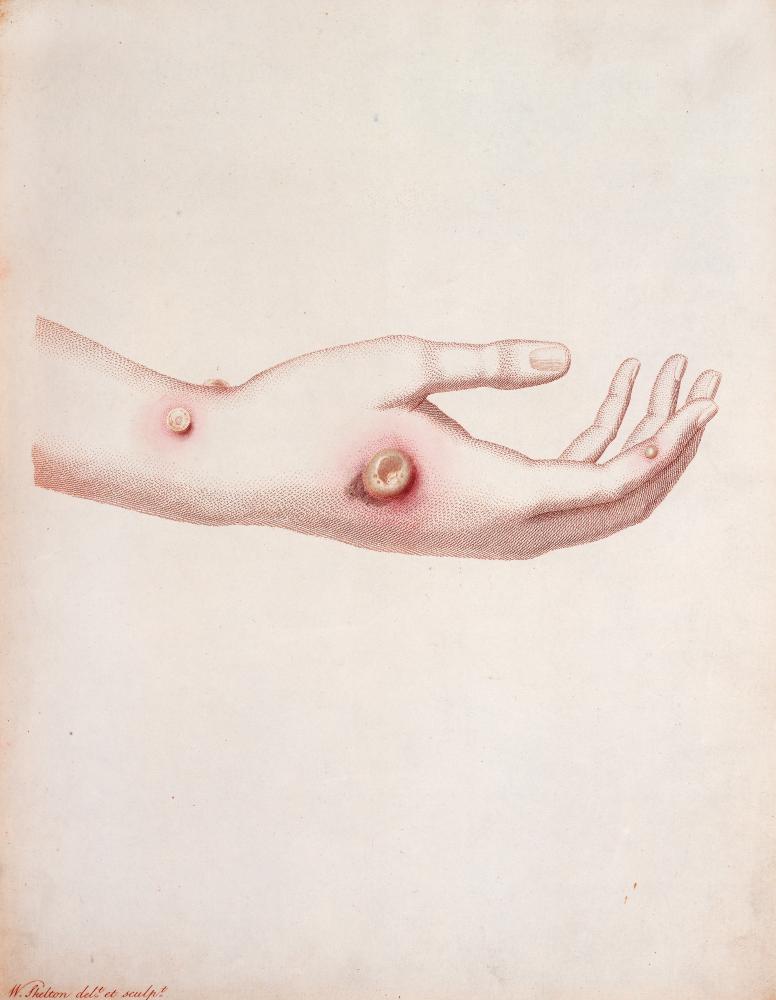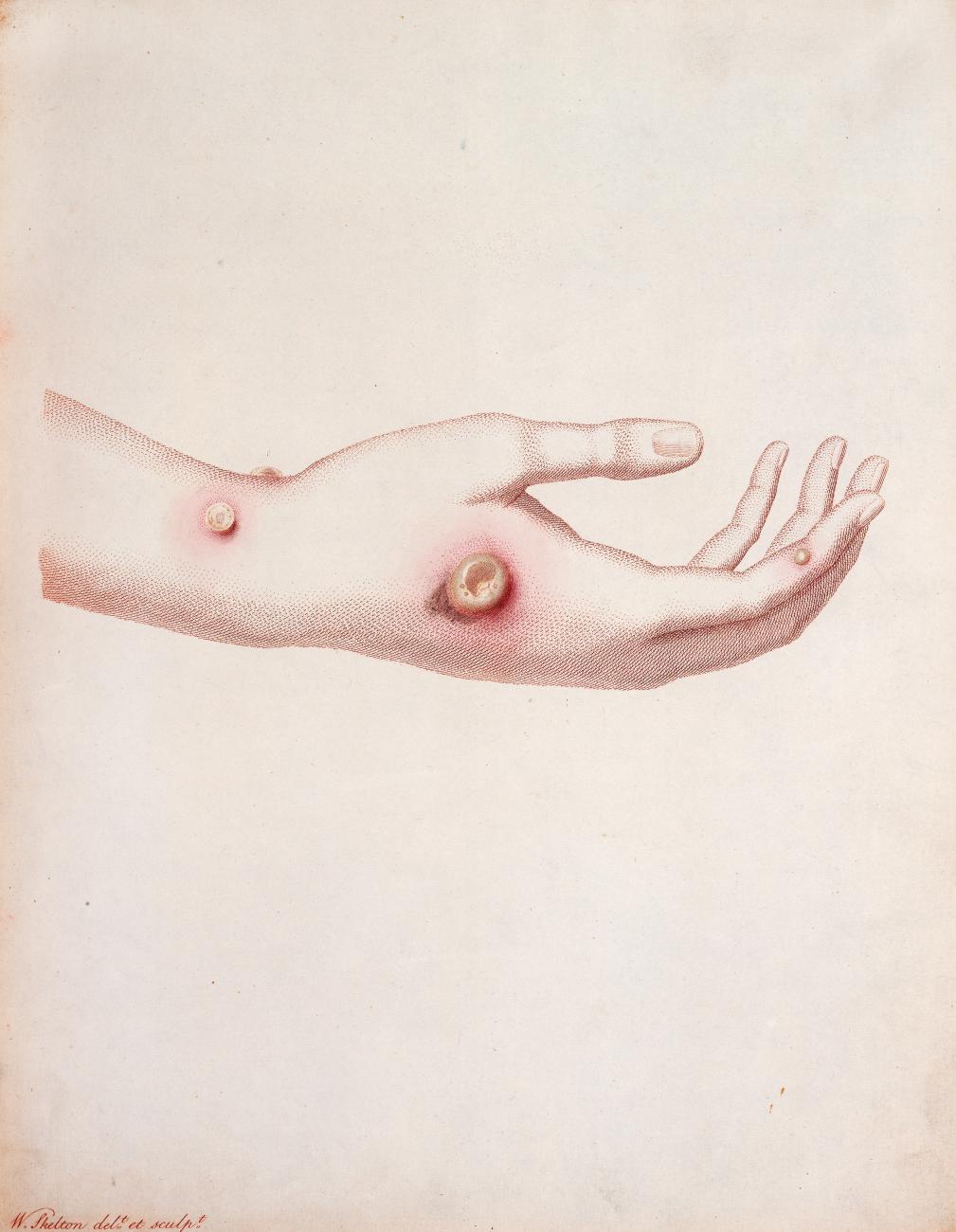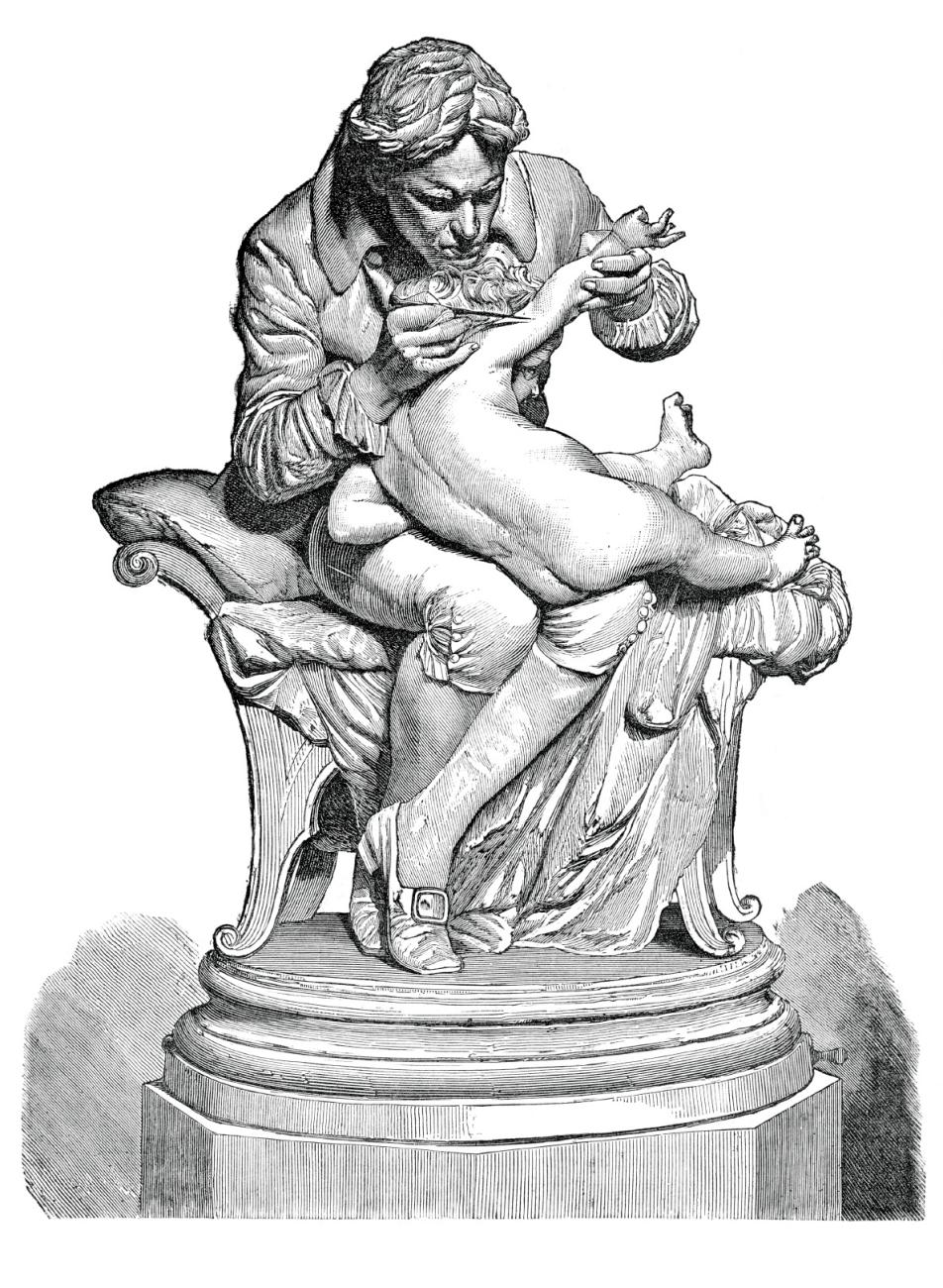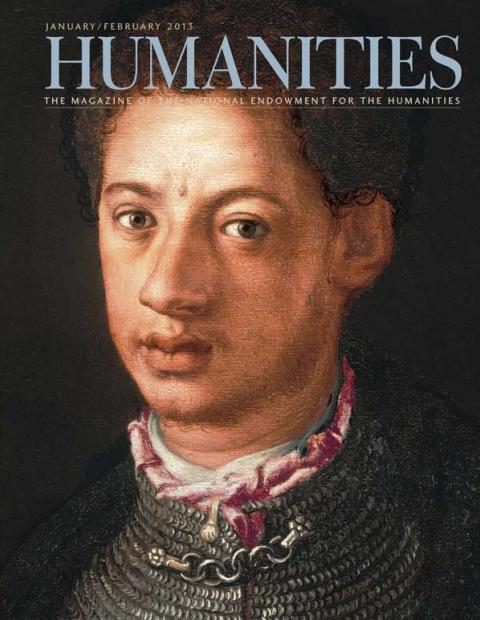Not malaria. Not cholera. Not AIDS, influenza, measles, or tuberculosis. Not even bubonic plague. No disease in history has destroyed more lives than the “speckled monster,” smallpox.
The pattern repeated itself in every empire: Egyptian, Hittite, Greek, Roman, Ottoman, and Chinese. Outbreaks always started subtly, with flu-like symptoms—fevers, headache, nausea. Days later came the speckles, the excruciating pustules that invaded every pore and orifice, including on the face. Victims were quarantined in pesthouses or on ships, and one-third died within weeks; survivors were left pockmarked and often blind. Smallpox invaded both palaces and slums, killing kings and peasants, czars and serfs, sultans and slaves throughout Europe, Asia, and Africa. And really, the Old World got off easy. Smallpox almost annihilated the New World, where some populations dropped by more than 90 percent in just decades.
There was one way to prevent smallpox, inoculation, a medieval Indian and Chinese practice imported to Europe in the early 1700s. Doctors collected pus or scabs from someone with a mild case, then scratched the inoculee’s upper arm and introduced diseased matter. With luck, the patient got a mild case himself—some aches, a few pustules—and thereby acquired immunity. All too often, inoculation backfired, and a full-fledged case of smallpox flared up. For this reason, most people agonized over whether to inoculate their families. Ben Franklin, for instance, went round and round—and, while he dithered, his four-year-old son Francis caught smallpox anyway and died. Even with inoculation, smallpox continued to kill with grim efficiency.
According to the standard history of smallpox, everything changed just before 1800. Edward Jenner—a doctor in rural England who had barely survived inoculation himself as a lad—had been hearing rumors for years that milkmaids never got smallpox, possibly because of exposure to cowpox, a mild infection that appeared on cows’ udders. Jenner reasoned that cowpox might provide immunity. He tested this theory in May 1796, when a local milkmaid named Sarah Nelmes developed three pustules on her hand, infected by a cow named Blossom. Jenner lanced the boils and summoned his gardener’s son, James Phipps. Phipps had never had smallpox or cowpox and was, at eight years old, the same age Jenner had been when inoculated. Jenner took the fluid from Nelmes and injected it into parallel half-inch scratches he made on Phipps’s arm. Phipps soon fell ill, developing pustules and a mild fever. But he recovered quickly. That July, Jenner inoculated Phipps multiple times with live smallpox virus. Nothing happened: Phipps didn’t even get a speckle.
Jenner soon “vaccinated”—from the Latin vacca, cow—twenty-two other patients with cowpox, and each one of them proved immune to smallpox, too. Jenner published these cases in a seventy-five-page treatise in 1798, and, according to the standard telling of the smallpox story, the world was never the same. Jenner set up clinics in England, and disciples began hauling dried cowpox matter from village to village on glass slides or dried twine, vaccinating everyone in sight. The vaccine soon spread worldwide, and it's often said then, probably truthfully, that Jenner saved more lives than any human in history.
But that standard history, while not wrong in outline, omits some crucial details. Jenner had originally hoped to publish his smallpox treatise through the famed Royal Society of London. (He was a fellow there, thanks to his groundbreaking studies of cuckoos.) But the Royal Society refused to print the initial version of it, saying that Jenner lacked enough data and urging him not to risk his reputation. He had to self-publish instead. Powerful doctors in the medical establishment also slandered vaccination as unsafe and unnatural, and Jenner found himself fighting their propaganda as much as smallpox itself.
And it wasn’t just elites that resisted: Everyday folk also feared Jenner’s methods, even as doctors throughout the British empire made heroic efforts to convince their patients to try vaccines. The standard telling of the smallpox story tends to skip this crucial struggle in the trenches. For this reason, NEH’s Office of Digital Humanities is funding the development of a role-playing video game that will immerse biology students and students of medical history in this era. The smallpox campaigns of the time shaped every aspect of modern public health, and the game demonstrates firsthand how doctors had to fight corruption, drunkenness, apathy, and hostile newspapers—along with disease. In the end, it took a lot more than medical science to slay the speckled monster.
The leader of the anti-vaccination movement was Dr. Benjamin Moseley, a blueblood who had practiced medicine in Jamaica and had written pamphlets there urging people to eat more sugar. Upon returning to England, Moseley joined the Royal College of Physicians and, like many doctors, made loads of money inoculating people against smallpox—income now threatened by vaccination.
Moseley and his ilk also had darker, more complex reasons to oppose vaccination. They focused especially on safety: Jenner had not proved the method safe, they argued, and no one knew the long-term consequences of introducing an animal disease into children, the target of most vaccination efforts. One political cartoon showed vaccinators heaving heaps of babies into the maw of a monstrous cow.
Moseley also feared that mingling cow and human matter violated natural law, and would lead to terrible and prodigious things. He fanned rumors that vaccinations would transform people into cows. In one article, he reproduced a drawing—worthy of a supermarket tabloid today—of the “ox-faced boy,” with bovine eyes and a patch of hair on his face. Picking up on this meme, cartoonists portrayed vaccination clinics as scenes right out of Ovid: Hoofs and horns sprouted from patients’ limbs and buttocks, while Jenner stood by coldly. In the background, people bowed down to worship a calf.
Moseley argued that vaccination would degrade people spiritually, making them near-brutes. Why, “owing to vaccination,” he wrote, “British ladies might wander in the fields to receive the embraces of the bull.” He even prophesied “a new Pasiphaë”—the mythological queen who had sex with a cow and gave birth to the Minotaur. Lisa Rosner, a historian at Stockton College helping develop the video game on vaccination, calls Moseley a talented demagogue: “He really had his finger on the pulse of what people are afraid of.”
Vaccination also faced opposition in British colonies, especially India. Brahmans objected to receiving fluids from the arms of the low-caste children who caught cowpox. Indians also equated vaccination with “consuming” cattle, which religious taboos forbid. If nothing else, vaccination left scars on the upper arm, a visible symbol of colonial oppression.
Jenner and his allies defended themselves, and counter-attacked, in various ways. They first cited statistical evidence that vaccination worked and was safe. Perhaps more powerfully, some doctors reportedly vaccinated their own babies and then exposed them to smallpox victims—seemingly risking their children.
Jenner sought help from other quarters, too. Nowadays, scientists who appeal directly to the press are often denounced as charlatans, but Jenner had no compunctions about courting writers—or flat out paying them—to publish odes to vaccines in popular literary journals. Some of this was hackwork, but Robert Southey, while poet laureate, wrote a poem relating how “this hideous malady which lost its power / When Jenner’s art the dire contagion stay’d.” And Samuel Taylor Coleridge, who’d lost a son to inoculation, praised vaccines as a worthy subject for verse.
Just as important, Jenner cultivated political contacts. As early as 1800, the powerful Earl of Lonsdale vaccinated all the tenants in his village. This success opened doors, and Jenner soon met King George and Queen Charlotte, who sponsored the Royal Jennerian Society to promote vaccines. Jenner also met the king’s sons, the Prince of Wales and Duke of York, who ordered vaccination for the entire army. Generals back then typically lost more troops to disease than enemy fire, and the military hailed Jenner as a patriot, England’s greatest ally against Napoléon.
(Ironically, though, Napoléon would soon declare Jenner his ally, after vaccinating the French army in 1805. Later, l’Empereur even freed a relative of Jenner’s, a captured British captain, saying, “I cannot refuse Jenner anything!”)
Although rooted in lower-class folklore, vaccination quickly became a crusade of the upper classes. Moseley and company looked increasingly shrill and backward, and the majority of doctors joined Jenner’s side. Having triumphed among the elites, now Jenner and his allies needed to convince the rest of society.
Even the imprimatur of the king couldn’t allay everyone’s fear, especially among the lower classes. And it’s this struggle of everyday people that Rosner and a team of historians, designers, and programmers want to capture in their video game, “Pox and the City.”
The game immerses players in early 1800s Edinburgh, a prestigious medical center and a major front in winning acceptance for vaccines. It offers the chance to play one of three roles: a doctor trying to open a vaccine clinic; an immigrant worker trying to avoid smallpox; or, unusually, a smallpox virus trying to infect the masses. To recreate classic Edinburgh neighborhoods, Rosner’s team will draw on contemporary images from the archives of the College of Physicians in Philadelphia and from visits to Edinburgh. She hopes that players can someday even, say, duck into an eating hall and hear people singing Robert Burns’s poems. For now, her team is concentrating on building the basic levels for the character of Doctor Alexander Robertson.
The real Alexander Robertson wrote an outstanding thesis on vaccine science in 1799, says Rosner. After that, he disappears from the historical record, but “he’s absolutely the kind of young physician who would have taken up vaccination in an entrepreneurial way,” she adds, therefore making him an appropriate character. Rosner drew on diaries of Edinburgh doctors and other primary sources to flesh out the milieu in which a Robertson would have worked.
At its most basic level, the game requires Robertson to persuade people to try vaccines, and he has to tailor his pitch to whomever he encounters. With a young Irish washerwoman, Robertson might do well to drop her priest’s name. For a striving merchant, Robertson could establish his scientific credentials, or mention that vaccination is all the rage in London. Other aspects of game play are more like quests, with multiple goals and subgoals along the way. For instance, one proposed subplot involving a corrupt doctor might require wheedling information from a drunken bar patron, haggling with journalists, and sneaking into the crooked doctor’s office to gather evidence.
How Robertson actually wins the game—which, if everything goes according to plan, will first be play-tested in late spring and finished in 2017—is still up for debate. Robertson’s ultimate goal is to set up a free vaccination clinic in Edinburgh for the poor. This will require him to impress wealthy patrons first and convince them to pay for everything. (Wealthy patrons might do this, Rosner says, because it was a reform-minded era, and many people saw medical charities as a good “investment.” Or, if civic duty didn’t convince them, naked self-interest might: Smallpox epidemics had a way of spilling over from the hovels of the poor into the parlors of the upper class.) Right now, Robertson wins the game by earning an official royal charter for his clinic, but Rosner says that goal might change after play-testing, depending on whether modern gamers find it satisfying enough.
Overall, “Pox and the City ” explores the social side of medicine, and its lessons ring true even today: People are no less stubborn now about taking preventive health measures, nor has the fear of vaccines ever quite dissipated. British laborers held massive protests against vaccines in 1885. In the twentieth century, Gandhi dismissed vaccinations as “filthy . . . harmful . . . little short of taking [eating] beef.” And U.S. activists today continue to rail against vaccines as the cause of autism, even though the studies on which those claims are based have been retracted as fraudulent.
Jenner’s own struggles to defend vaccination took a great deal out of him. Although he became famous worldwide, and although Parliament granted him huge bounties (first, £10,000; then, £20,000), he grew somewhat bitter and cantankerous in old age, and amassed debts he could never quite clear. Even the Royal Jennerian Society went bankrupt. When Jenner died in 1823, one of the few mourners at his funeral was James Phipps, the boy he’d vaccinated a quarter century earlier.
Nevertheless, Jenner’s idea did triumph. Denmark, Russia, and Sweden all made vaccines mandatory for citizens in the early 1800s. The practice spread across the Atlantic as well: Thomas Jefferson personally vaccinated his children and staff at Monticello, and Ben Franklin, after studying the effectiveness of vaccination, eagerly promoted it. Great Britain outlawed inoculation in 1841. By 1853, it was mandatory to vaccinate children against smallpox by their third month.
Eventually, the world achieved even Jenner’s grandest hope: “to see Societies form’d throughout the Empire for the Extermination of the Smallpox.” Smallpox still killed at least three hundred million people in the twentieth century, but year by year the number of victims dwindled, and the last natural case occurred in 1977, in a Somali hospital aide. (Armed guards stood at his door until the last pustule dried up.) Today, only a few frozen vials of the speckled monster still exist, in high-security labs in the United States and Russia. Smallpox remains the only human disease ever eradicated—a scourge destroyed by one brilliant man, and his equally brilliant powers of persuasion. Still, we cannot forget the everyday heroes like Dr. Robertson, either, who made Jenner’s case day in and day out across the world. It can be hard to imagine nowadays why their patients required so much persuading—why they were equally afraid of the disease and its cure. But as Rosner reminds us, “scientific advances that we take for granted today were not obvious.” “Pox and the City” shows how they came to be so.

